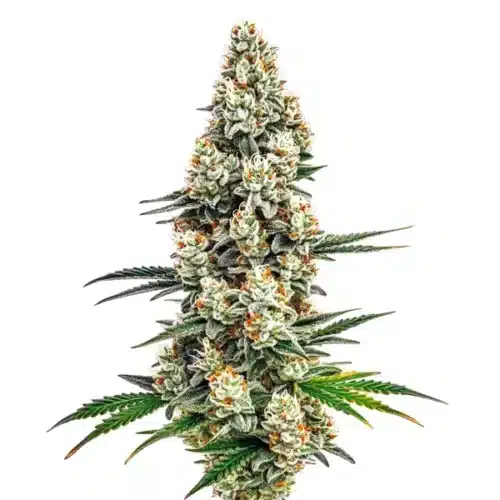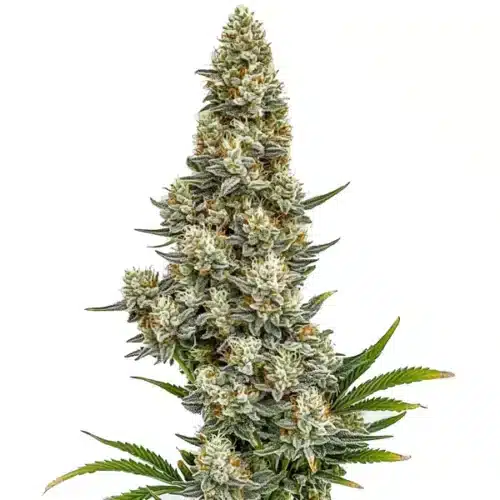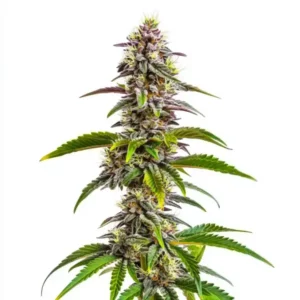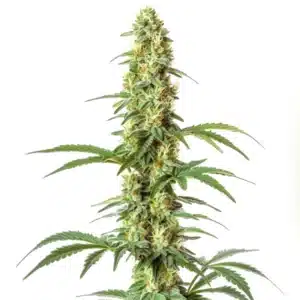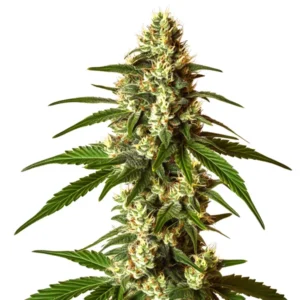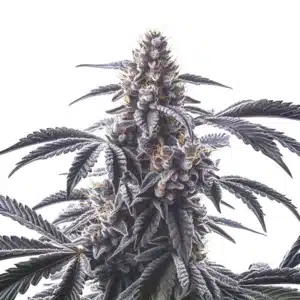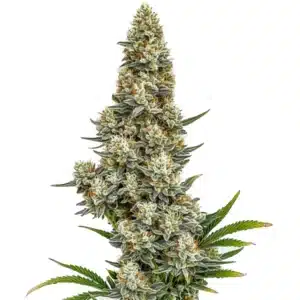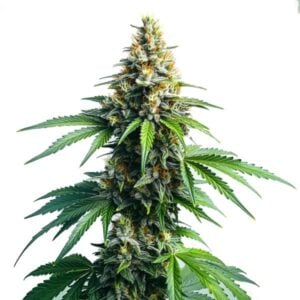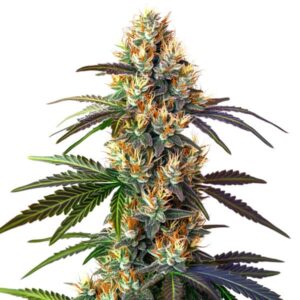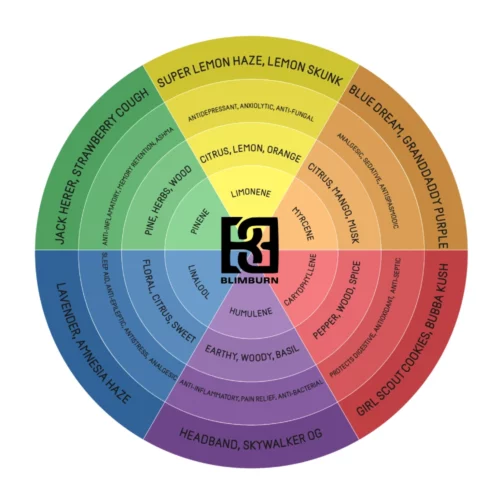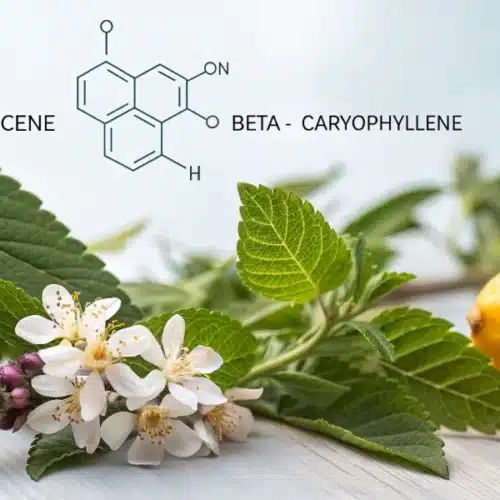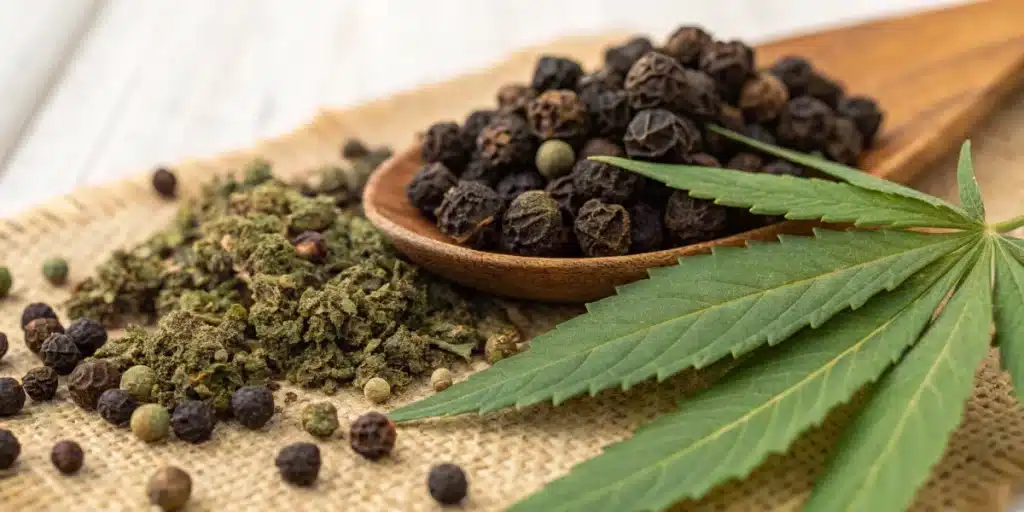
B-Caryophyllene Terpene: Benefits, Sources & Uses
Exploring B-Caryophyllene
Chemical Structure Basics
B-caryophyllene features a unique bicyclic structure composed of fifteen carbon and twenty-four hydrogen atoms. This arrangement creates a ring system that delivers rigidity and contributes to its stability at ambient temperatures. Moreover, the presence of olefinic bonds allows it to interact with other biochemicals. Researchers employ spectrometry and chromatography to confirm its signature peaks. In parallel, the three-dimensional shape determines how well it fits into biological binding sites across various systems.
Its chemical framework classifies it as a sesquiterpene, marking it heavier than monoterpenes. In contrast, monoterpenes rely on ten carbons and display more volatility. Because of its molecular weight, this compound persists longer in extractions and fragrances. Consequently, formulators select it for products that demand lasting aroma. In addition, this structure supports redox stability under heat. As a result, it maintains integrity during distillation and storage.
Recommended Strains
Stardawg
 THC: 17% - 25%
THC: 17% - 25% Type of seed: Feminized
Type of seed: Feminized Phenotype: Mostly Sativa
Phenotype: Mostly Sativa Day to flower: 9 - 10 weeks
Day to flower: 9 - 10 weeks
Stardawg Auto
 THC: 18% - 22%
THC: 18% - 22% Type of seed: Autoflowering
Type of seed: Autoflowering Phenotype: Mostly Indica
Phenotype: Mostly Indica Day to flower: 8 - 10 weeks
Day to flower: 8 - 10 weeks
Natural Sources (Herbs, Spices)
Herbal plants offer rich supplies of this compound. For instance, black pepper and cloves deliver high percentages in essential oils. In parallel, hops contribute small but significant traces. Cannabis flower often contains varying levels depending on strain genetics. Moreover, oregano and rosemary oils also carry detectable amounts. Producers harvest these plants and apply solvent or distillation techniques to concentrate the terpene. This approach ensures consistent yield for applications.
Collectors prefer fresh plant material to maximize yield. They dry leaves and buds under controlled conditions to prevent degradation. Next, they apply steam distillation or cold pressing to isolate the oil. In many cases, growers adjust harvest timing to capture peak terpene levels. Additionally, they monitor environmental factors such as humidity and light. These measures boost the presence of b-caryophyllene in final extracts and help maintain sensory quality.
Unique Receptor Interactions
This b-caryophyllene terpene interacts uniquely with cannabinoid receptors. It binds selectively to CB2 receptors found predominantly in immune and peripheral cells. This binding triggers signaling pathways that regulate inflammation and immune responses. In contrast, it does not activate CB1 receptors that mediate psychoactivity. Due to this selectivity, it displays functional benefits without altering cognition. Scientists explore this mechanism to develop non-intoxicating therapeutic agents for targeted relief applications.
Furthermore, it modulates other receptor systems such as TRPV1 and PPARγ. These interactions influence pain perception and cellular metabolism. In particular, activation of PPARγ supports metabolic regulation and antioxidant pathways. In addition, engagement of TRPV1 channels may enhance its analgesic potential. This synergy between targets explains its broad spectrum of actions. As studies progress, formulators consider combining it with other terpenes to amplify receptor dynamics.
Promos & Deals
Health and Therapeutic Effects
Anti-inflammatory Actions
When immune cells release cytokines, this b-caryophyllene terpene inhibits key pathways such as NF-κB signaling. Researchers note reduced levels of interleukin markers after exposure in cell assays. Consequently, tissues show less swelling and redness. This effect supports its use in topical and ingestible formulations aimed at inflammatory skin or joint conditions. Moreover, clinical trials suggest it complements standard therapies without adverse events.
In animal models, this compound reduced inflammation in digestive and respiratory tissues. Scientists administered it orally and observed marked decreases in edema and leukocyte infiltration. They highlighted significant improvements in inflammatory bowel disease models. In parallel, studies on lung inflammation showed diminished airway constriction. These findings encourage further trials in humans seeking alternative options. In the meantime, practitioners explore low-dose regimens for chronic inflammation management.
Pain Modulation Potential
Clinicians examine this compound for its analgesic benefits. Through CB2 activation, it influences pain pathways in peripheral nerves. Patients report relief from mild to moderate discomfort in joint and muscle conditions. In addition, it may enhance opioid therapies, allowing lower doses. Early studies indicate that co-administration with cannabidiol delivers synergistic pain control. Moreover, its non-intoxicating profile makes it attractive for patients wary of psychoactive effects.
Laboratory assays show reduced nociceptive responses in rodents following oral or topical dosing. Subjects exhibited fewer pain-related behaviors in hot plate and tail flick tests. These outcomes align with its anti-inflammatory properties, addressing pain at its source. Furthermore, formulators explore nanoemulsion and liposomal carriers to boost bioavailability. As a result, products achieve faster onset and longer duration. This progress drives interest in over-the-counter pain relief formulas.
Gastrointestinal Benefits
This compound supports digestive health by interacting with gut receptors. It reduces gut inflammation and regulates motility, easing symptoms like cramping. In clinical settings, patients with irritable bowel syndrome report reduced discomfort and improved bowel function. Additionally, it may balance gut microbiota and encourage mucosal healing. Some research even hints at protective effects against ulcers. These findings underpin the development of functional foods targeting gut wellness.
Manufacturers incorporate it into capsules and food products for targeted gut support. They pair it with probiotics and prebiotics for comprehensive digestive care. This combination aims to relieve bloating, gas and irregularity. Moreover, flavored gummies and beverages provide user-friendly delivery. As more trials emerge, ratios and dosing guidelines will refine. For now, practitioners recommend starting low and adjusting based on individual response and tolerance.

Aromatic and Flavor Profile
Spicy, Woody Notes
It delivers a bold scent that blends spice and wood at first aroma. Sensory panels describe hints of black pepper and oak. This complexity arises from its bicyclic backbone and double bonds. As a result, formulators use it to add depth to fragrance and flavor blends. It also complements woody essential oils such as cedar and sandalwood. Additionally, it enhances mouthfeel in culinary oil preparations.
When combined with complementary terpenes, it creates layered aromatic experiences. For example, pairing with limonene adds citrus brightness while myrcene brings herbal undertones. This approach enriches craft beer hops and gourmet sauces. In the beverage industry, it contributes to signature spice notes in premium gins. Companies market these nuances to discerning consumers seeking authentic flavor. Consequently, it retains popularity among chefs and perfumers.
Common Culinary Uses
Chefs leverage this compound to elevate savory dishes. They infuse oils with whole peppercorns or dried cloves to extract flavor. Next, they drizzle infused oil over roasted vegetables or grilled meats for robust spice. This practice boosts aroma and adds complexity without overwhelming heat. Furthermore, it enhances marinades and salad dressings. Home cooks appreciate its versatility, using it in marinades or bread dips to impress guests.
In the beverage world, bartenders craft spiced cocktails using tinctures rich in this compound. They balance its heat with sweet syrups and citrus juices. The result yields signature cocktails with peppery finish. Pastry chefs even experiment by adding small doses to dark chocolate ganache for depth. These culinary applications illustrate its function in modern gastronomy. As awareness grows, more recipes will feature this aromatic element.
Synergies with Other Terpenes
It works in tandem with other terpenes to boost overall effect. When paired with limonene, the combination enhances mood elevation and uplifts energy. In contrast, mixing with linalool promotes calm and stress relief. Manufacturers exploit these synergies to tailor aromatherapy blends. They adjust ratios to achieve desired outcomes, such as focus or relaxation. This strategy maximizes benefits beyond individual actions.
Research also explores synergy in phytochemical extracts. Trials on whole plant oils show greater efficacy than isolated compounds. This phenomenon, often called the entourage effect, stems from multi-target interactions. For example, combining with pinene and humulene may improve cognitive focus while supporting anti-inflammatory pathways. Such findings encourage full-spectrum extracts for supplements and topicals. Formulators continue to refine these mixtures for optimal performance.
Extraction and Formulation
Steam Distillation Methods
Operators use steam distillation to separate volatile compounds from plant biomass. They pass steam through material, causing oil droplets to vaporize. After condensation, oil rises and separates from water. This gentle method preserves aromatic integrity and purity. It also avoids high heat that can degrade sensitive molecules. Many small-scale producers rely on glass or stainless steel distillers for artisanal batches.
In industrial settings, manufacturers scale up with continuous flow systems. These setups feed fresh steam and plant material to maintain efficiency. They also implement vacuum distillation to lower boiling points. This adjustment reduces thermal exposure further. As a result, final extracts retain higher proportions of delicate terpenes. Engineers fine-tune pressure, temperature and time to optimize yield and quality.
CO₂ Extraction Techniques
Supercritical CO₂ extraction yields clean, solvent-free distillates. Technicians increase pressure to push CO₂ beyond its critical point. The fluid then dissolves oil compounds. When pressure drops, CO₂ returns to gas and leaves behind pure extract. This approach captures a broad spectrum of terpenes and cannabinoids. Companies favor it for consistency and safety. In addition, it offers tunable selectivity by adjusting pressure and temperature.
Due to its efficiency, CO₂ extraction supports large-scale operations. Producers separate fractions by manipulating parameters, isolating specific profiles. They collect terpenes separately from cannabinoids for tailored products. This flexibility enables formulation of high-purity terpene blends. Consequently, product developers can craft oils and concentrates that highlight particular sensory or therapeutic attributes. This precision drives innovation in wellness and flavor industries.
Formulating Oils and Balms
Formulators mix concentrated terpene extracts with carrier oils like MCT or jojoba. They measure ratios to achieve target potency and aroma. Next, they incorporate antioxidants to extend shelf life. They also add emulsifiers when designing water-based suspensions. Through careful blending, they ensure uniform distribution of active compounds. This process results in oils that pour smoothly and deliver consistent effects.
For balms, manufacturers combine waxes, butters and oils in heated vessels. They start by melting beeswax and shea butter, then add the terpene-oil blend. After stirring, they cool the mixture while preventing crystallization. The final balm offers a firm texture that melts on contact with skin. It delivers fragrant, restorative massage experience. Entrepreneurs often package these products in recyclable tins to appeal to eco-conscious customers.
Applications in Wellness
Topical Preparations
Skin-care specialists create creams and gels infused with this terpene for targeted relief. They blend it with soothing ingredients like aloe vera and arnica. Applied to achy joints or sore muscles, the formulation promotes comfort. In addition, it supports skin health by reducing redness. Brands emphasize natural solutions and offer trial samples. Users report noticeable relief within minutes of massage application.
Beauty lines also feature serums that include small doses of this compound to enhance fragrance and deliver anti-inflammatory support. They package serums in dropper bottles for easy application. Customers apply a few drops to clean skin, focusing on areas prone to irritation. The product spreads smoothly and absorbs quickly. Many report reduced sensitivity after daily use. This trend drives further research into dose optimization.
Aromatherapy Blends
Aromatherapists combine this terpene with calming oils such as lavender and chamomile. They diffuse the blend to promote relaxation and emotional balance. Clients inhale mist during spa sessions or at home to reduce stress. Practitioners recommend sessions lasting twenty to thirty minutes for maximum benefit. Such blends also support mental clarity and mood stability. Users appreciate the natural scent profile that avoids synthetic fragrance.
DIY enthusiasts craft roll-on bottles mixing essential oils and carrier oil. They adjust levels to suit personal preference. By keeping it on pulse points, they enjoy sustained aroma throughout the day. Many users pair this approach with mindfulness or meditation routines. Feedback highlights enhanced focus when combined with uplifting terpenes like limonene. This flexibility makes it easy to incorporate into daily wellness rituals.
Functional Food Products
Food scientists explore adding this terpene to functional snacks and beverages. They infuse gummies, chocolates and teas with microdoses to enhance consumer experience. Beyond flavor, the compounds may support digestion and relaxation. Producers test stability under heat and shelf conditions. They also monitor legal limits and labeling requirements. As regulations evolve, companies innovate to maintain compliance and product appeal.
Culinary brands develop savory snacks like spiced nuts and crisps featuring this compound. They partner with farmers to source high-terpene hemp varieties. These collaborations ensure traceability and quality. Marketing often focuses on wellness benefits alongside taste. Customers enjoy snackable formats that fit active lifestyles. Future products may include ready-to-drink tonics and nutrition bars. This integration of flavor and function signals a growing market trend.
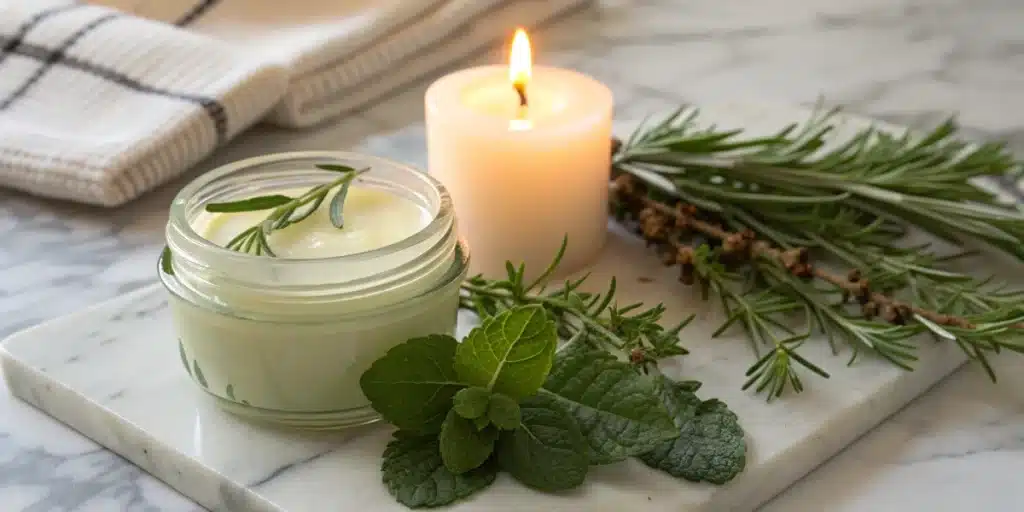
FAQs about b-caryophyllene terpene
Is b-caryophyllene terpene safe for daily use?
Most studies indicate that b-caryophyllene terpene poses minimal risk at recommended dosages. Physicians generally agree that daily intake through food, topical or inhalation remains safe for adults. You should start with low amounts and monitor any skin sensitivity or digestive response. Pregnant or nursing individuals should consult healthcare providers before use. Always choose high-quality products from reputable brands to ensure purity and consistency.
Which plants contain the highest levels?
Black pepper, cloves and cannabis strains rank among the richest sources of this compound. Among herbs, oregano and rosemary also deliver notable percentages in essential oils. Growers test plant material to determine peak terpene levels before harvest. Variations occur by cultivar, soil conditions and climate. If you seek high content, look for certified lab reports on product labels. Freshly extracted oils typically provide the strongest concentrations.
How does it interact with CBD?
This compound and CBD share complementary effects through distinct mechanisms. While CBD influences multiple receptor systems including CB1 and serotonin pathways, this substance targets CB2 receptors specifically. Together, they enhance anti-inflammatory and analgesic benefits in both topical and ingestible preparations. Consumers often report more balanced sensation and reduced discomfort when these compounds combine. Formulators leverage this synergy to craft blends aimed at holistic relief.

